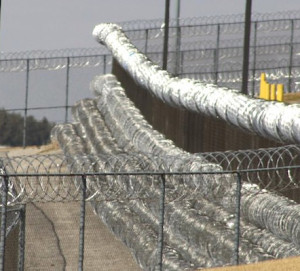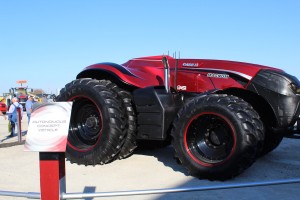The Farm and Dairy staff selected the top 10 stories to impact its readership in 2016. Comment below to share how these stories left a mark on your year.
1Prison Farms
In April, the Ohio Department of Rehabilitation and Correction, and the John Kasich administration, announced plans to close and sell Ohio’s prison farms and assets. The decision involved about 12,500 acres of farmland, about 3,300 head of cattle and roughly 10 farm locations.

The administration said it could do a better job of focusing on rehabilitation and opportunities for inmates without the farms, which the state said had become a drain on energy and resources.
The decision surprised most Ohioans, and many were concerned about how it would all play out, and what it would cost the state to buy the foods it had previously produced.
Learn more: Ohio corrections department to sell prison farms

2Presidential election makes big waves
The national presidential election took center stage for much of the year. Since the new leader will have significant influence over farm policy, we took a look at their positions on issues that matter to farmers and rural America.
We outlined their stances on trade, immigration, clean water, energy, food safety, the farm bill, biotechnology and taxes. With Donald Trump’s victory in November we see his administration taking shape and wait for the legislative session to start again to see how policies affecting rural America are influenced by his leadership.
Learn more: Where do Clinton and Trump stand on agriculture?
3GMO labeling
Capping a hot issue that bubbled up for the past five years, in July, Congress passed legislation that will require most food packages to carry a text label, a symbol or an electronic code readable by smartphone that indicates whether the food contains genetically modified organisms, or GMOs. President Barack Obama signed the bill into law.
The U.S. Department of Agriculture has two years to write the rules.
Learn more: Ohio Farm Science Review opens with GMO discussion

4Mergers
This was a year of many mergers, at the national and local level. The mergers were hailed as good business decisions by some, and feared by others. Nationally, the chemical giant Bayer announced plans to acquire Monsanto, ChemChina announced plans to acquire Syngenta, and John Deere continued its plan of acquiring Monsanto-owned Precision Planting. In August, the U.S. Department of Justice filed an antitrust lawsuit against Deere, but the company vowed to defend its merger.
Locally, mergers were announced between Town and Country Co-op and Western Reserve Farm Cooperative; Agland Co-op and Heritage Cooperative, and Sunrise and Trupointe.
Learn more: Sunrise and Trupointe Co-ops propose merger; Agland Co-op and Heritage announce intent to merge; Bayer and Monsanto finalize merger agreement; Kubota to buy Great Plains Manufacturing; Justice department files antitrust lawsuit against John Deere, Monsanto
5Driverless tractors advance industry
Two autonomous tractors were unveiled at this year’s Farm Progress Show in Iowa, Aug. 30. After the initial showing they popped up at other farm shows and national events around the country, including the Farm Science Review and the National FFA Convention & Expo.
The New Holland NH Drive and Case IH Magnum concept tractors feature driverless technology, which can perform farming tasks day and night. New Holland Agriculture has received the 2017 SIMA Silver Innovation Medal at for the NH Drive concept, which can work with or without a driver.
Learn more: Driverless tractors unveiled at Farm Progress Show
6Oil and gas markets on ‘pause’
Although overall production was up, lower oil and natural gas prices in 2016 continued to challenge operators, who reduced drilling activity in the Ohio, Pennsylvania and West Virginia Marcellus and Utica shale plays. However, a number of intrastate and interstate pipelines (Rover, Leach Xpress, Rayne Xpress and Nexus) have been approved or in the approval process that could move up to 6.8 billion cubic feet per day out of the region by the end of 2018.
Learn more: Shale gas drilling permits increase in Ohio, Pa.; Ohio’s Utica Shale gas production up, oil down; New natural gas infrastructure to up transport from Utica; Utica and Marcellus shale: Oil and gas drilling permits inch higher; Marathon finishes Cornerstone Pipeline; Utica and Marcellus shale: Horizontal well permit activity still strong in Pennsylvania

7The VFD takes effect Jan. 1
The Veterinary Feed Directive is set to take effect starting Jan. 1, 2017, which means producers will no longer be able to access certain medicated feeds without veterinary oversight. The FDA’s main concern is improper or overuse of these drugs may be contributing to antibiotic resistant bacteria, making it more difficult to treat human illnesses. One of the keys is to have a Veterinary Client Patient Relationship (VCPR) with your local veterinarian.
Learn more: Veterinary Feed Directive: What producers need to know for the new year

8Pa. budget stalemate
The future of Penn State’s agriculture and Extension programs was almost jeopardized by a budget stalemate. The college of agricultural research and Extension programs are funded through the Land Scrip Fund, which had been part of the governor’s line-item veto and was zeroed out in late February. The stalemate ended March 23. Penn State received a 5 percent increase in general support appropriations, and a $4.3 million increase for agricultural research and Extension.
Learn more: Pa. budget impasse hits Penn State ag college, Extension

9Tight year for profits
For the third straight year, farmers faced declining net farm incomes, forecasted down 14.6 percent from 2015. Nearly all commodities felt the pinch, especially dairy which saw a decline of nearly $1 billion in profits in both Ohio and Pennsylvania. Grain prices were down, with corn barley trading at $4 a bushel and beans staying close to $10 or under. Net farm income for 2016 is predicted to be the lowest since 2009.
Learn more: USDA reports 2016 farm profits; Ag barometer points towards tough times; Good game plan a must for farmers in 2017; Tough ag economy weighs on minds at Farm Science Review; Dairy prices in a slump, but showing some improvement; Challenges ahead: crop and livestock sectors face difficult new year

10CAUV
Ohio farmers and landowners continued to push for reform in the Current Agricultural Use Value formula, after seeing two- and three-fold increases to their property taxes in recent years. Farmer-supported legislation was before lawmakers all-year, but was never voted out of committee. Some farmers said they were facing going out of business because of the dramatic increases, but school districts and local governments, who depend on the income from taxes, said changing the formula would cause a tax shift and increase on the tax burden on residential property owners. Supporters said they’ll push for reform again in 2017.
Learn more: Ohio legislature punts on CAUV farm tax reform; Ohio’s CAUV case will stay in court, but trial not until 2018; Ohio farm groups disappointed with new CAUV rates; CAUV reform on hold in House and Senate committees; Ohio House committee hears CAUV bill testimony; Landowners in CAUV lawsuit want to keep case in Ashtabula; What’s up with CAUV appeals?












We are happy CAUV was selected in the top 10. In 2017, Ohio woodland owners are working toward a $0/acre tax goal which has been in place for 11 other states. We are using the Iowa legislation as a model with a minimum of exceptions. We have been working closely with the Ohio Farmers Union on this effort.